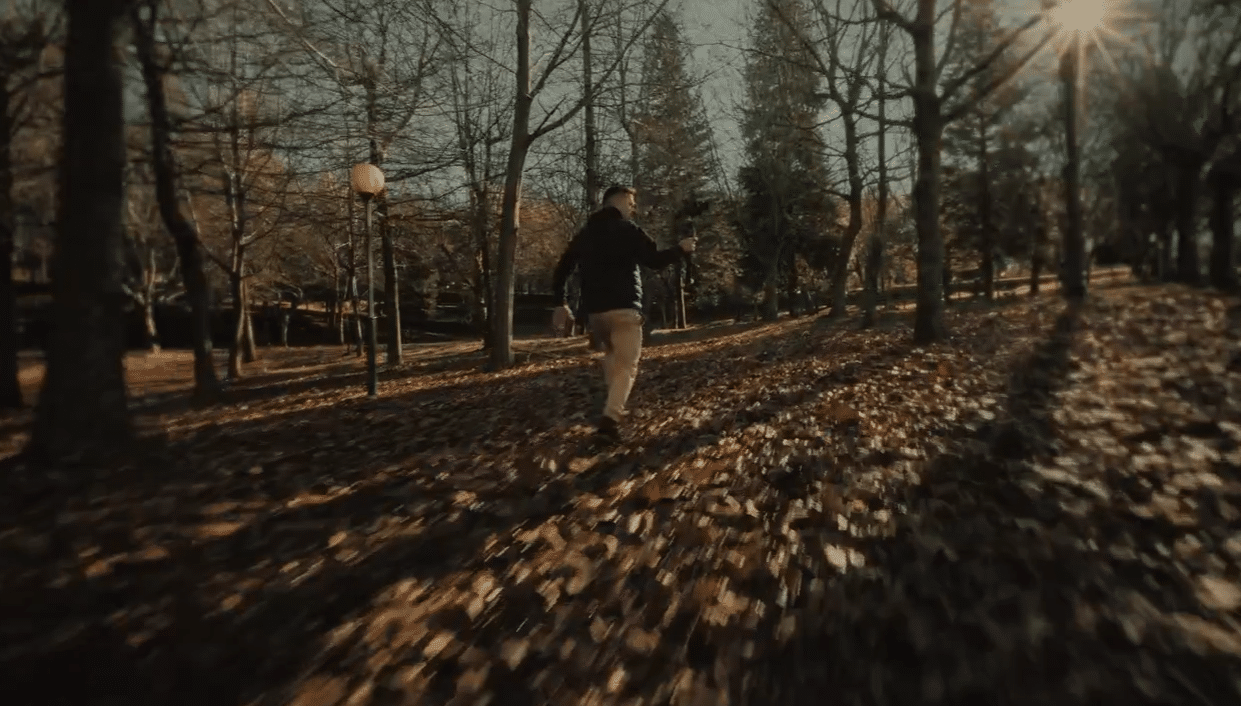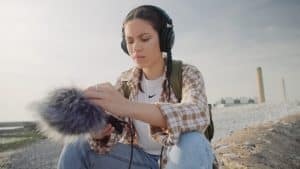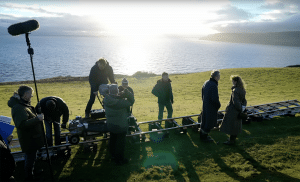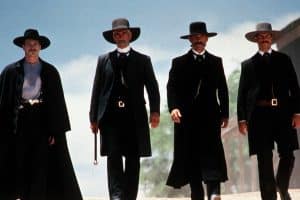Let’s discuss the different color temperatures you can expect to work with while shooting a film.
Let’s get right to it: color temperature is the hue of the light source used to illuminate a scene, and it’s measured in degrees Kelvin (K). The Kelvin scale is a thermodynamic temperature scale used to measure temperature. Unlike the Celsius and Fahrenheit scales, which are based on reference points, the Kelvin scale is based on absolute zero, the theoretical point at which molecular motion ceases entirely. This Kelvin scale will act as a guide for you to produce the best-looking images possible with the type of specific light provided to you.
The biggest takeaway from this article is that different color temperatures create different moods and atmospheres in a film. When working with temperature, you create “cinematic” images that replicate how the eye sees color. Our roles as filmmaking generalists and cinematographers is to find a balance between the color temperatures you’re working with to create a visually appealing scene and finding the best way to serve the story.
So here are some common color temperatures used in filmmaking.
First we’ll start with the two baselines that can inform how you approach a scene to start, then we’ll dive into some of the more specific tonal and temperature ranges you’ll encounter.
Daylight (5,600K): Daylight color temperature is often used for outdoor scenes filmed during the day. It provides a natural, bright, and blue-toned light. An overcast day can be found anywhere between 6000K-7500K. And at times a clear blue sky can be 10,000K. So just be mindful of what the clouds are doing and how bright the scene actually is.
Tungsten (3,200K): Tungsten lighting is commonly used indoors and provides a warm, yellowish light. It’s often used for interior scenes or when a cozy, intimate atmosphere is desired. In terms of choosing a film stock, the other option is a “tungsten-balanced” variety. Many current lights have the ability to have tungsten (warmer) temperatures to use. While this hasn’t always been the norm, this does speed up the process of lighting a scene, balancing the color temperatures, and swapping out individual lights.
Now let’s move on to other lights and temperatures that you’ll encounter on location.
Fluorescent (4,100K): Fluorescent lighting can vary in color temperature, but it typically falls between 3,000K to 6,000K. It can cast a greenish or bluish tint and is commonly found in office buildings or industrial settings. One of the best examples of the specific look this gives off is in The Matrix. While the film already has a green-ish tint for aesthetic reasons, the scenes in Neo’s office are great example of the temperature.
LED lights: LED stands for Light Emitting Diode. LED lights are semiconductor devices that emit light when an electric current passes through them. Unlike older incandescent bulbs, which use a filament that produces light as it heats up, LEDs generate light through a process called electroluminescence. They can mimic daylight, tungsten, or other color temperatures, offering so many new opportunities for filmmakers. At such, LEDs have become a mainstay in film and television production. They’re cheaper and more efficient.
An incredible example how these lights can replicate natural daylight colors and brightness, look no further than Lewis Pott’s brilliant cinematography-focused YouTube channel.
Candlelight (1,000-1,800K): Candlelight has a very warm, orange-red hue and is often used to create a romantic or intimate atmosphere in a scene. Typically, cinematographers will use bigger light sources to replicate the warmth and tonality of candlelight as a real candle flame isn’t bright enough for filmmaking.
The lumens of a candle, which represents its total amount of visible light emitted per unit of time, can vary based on factors like the type of wax you’re using, the size of the candle, and how many candles are placed in the scene. However, on average, a typical candle emits around 12-15 lumens of light.
Moonlight (4,100-4,500K): Moonlight tends to have a cooler, bluish hue compared to daylight, making it suitable for night scenes when a softer, more mysterious ambiance is desired. A great example of utilizing this color temperature, or moreso – what this color temperature can look like on film – is 2022’s brilliant Nope.
While the moon doesn’t actually provide enough light to use a primary light source, the color temperature that is given off to the naked eye can often look blue-ish. Films will typically try to replicate this tint in various ways such as gels and post-production cooling effects like “day-for-night” shooting that used to be the norm for the moonlight effect.
Rob Ellis, another brilliant YouTuber to follow for cinematography essentials, demonstrates how to pull off this effect and how it relates to balancing your color temperatures.
Golden hour(3,000K – 4,000k): One of the most consistent and and important color temperatures you’ll encounter on set is golden hour. This, of course, refers to the period shortly after sunrise or before sunset when the sun casts a warm, golden light. The color temperature during golden hour can vary but is generally around 3,000K to 4,000K, providing a soft, flattering light for outdoor scenes. Almost all of the most beautifully shot films ever made have utilized golden hour in some capacity throughout their runtime. Because the sun is low on the horizon, the light is typically softer then it would be at say noon, in the middle of the day.
And there you have it! Using these examples, you can plan your color temperatures and get exactly the type of mood you’re looking for in your next project!
Cover image via Videvo.
Looking for filmmaking tips and tricks? Check out our YouTube channel for tutorials like this . . .




